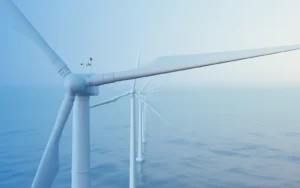Threatened species and habitats were harmed, and nearly three billion animals were killed or displaced. Over 3000 homes were lost, and overall, the fires caused billions of dollars of damage.
The Hon Paul Fletcher MP, Minister for Communications, Urban Infrastructure, Cities and the Arts noted in 2020 that “access to reliable communications before, during and after a natural disaster is critical to the safety of all Australians”.
BAI played a crucial role in keeping responders, citizens and communities connected throughout the crisis. Our teams defended, reinforced and repaired communications networks to ensure the continuity of radio and television broadcast transmissions. We also protected the NSW Public Safety Network (NSW emergency services’ primary communications network) to ensure emergency responders were able to communicate and coordinate with each other.
Between September 2019 and February 2020, BAI Communications (BAI) managed fire risk across 27 sites in New South Wales (NSW) and Victoria to protect more than 130 individual broadcast services. Physical fire damage occurred at just three BAI sites, with only one of them experiencing significant damage.
Fire prevention and teamwork keeps radio and television on-air at Mount Nardi.
Mount Nardi is a communications site located in Nightcap National Park, 30 kilometres north of Lismore, NSW. It broadcasts to approximately 250,000 people in the Northern Rivers area.
In late December 2019 and early January 2020, fires in the National Park impacted the site. The fire edge came close but did not breach the property itself due to favourable wind conditions combined with fire prevention efforts.
BAI and NSW Rural Fire Service (RFS) collaborated to protect the Mount Nardi site. Specifically, through the combination of ground maintenance – the RFS increased the asset protection zone around the site – and use of fire retardant which prevented embers from generating spot fires.
An on-site generator also automatically started as required throughout the season, ensuring continuity of power to the broadcast infrastructure.
As a result, radio and television services remained on-air throughout the period, keeping Northern Rivers residents up to date about bushfires and emergency measures.
Local radio around Mount Elliot stays on air thanks to emergency power and battery technology.
Mount Elliot is a BAI Communications site in northern Victoria. Located near the NSW border, it provides broadcast services to approximately 2000 residents in Corryong and surrounds.
Throughout late December 2019 and mid-January 2020, bushfires affected Mount Elliot, resulting in a loss of mains power to the site.
Due to its location and the ongoing fire risk, BAI could not access the site at first. When teams could reach the site, they installed a portable generator to provide temporary power.
Corryong and the other communities within Mount Elliot’s service area also benefited from the on-site Tesla Powerwall battery. The battery provided 27 hours of standby power at the fires’ peak, keeping public national broadcaster, the Australian Broadcasting Corporation’s local radio service on air, to provide critical information to residents.
Collaboration is key at Mount Wandera
Mount Wandera provides radio and television broadcast services to around 55,000 residents in NSW South Coast region, including Batemans Bay and Moruya.
The Currowan fire swept through Mount Wandera on 31 December 2019. The brick building and steel towers on site were not damaged, but the extreme radiant heat from the fire melted cables and damaged antennas on the tower. The fire also damaged the electrical supply infrastructure. Backup diesel generators automatically engaged to restore power, but damaged antenna systems made broadcasting impossible.
From 1–5 January 2020, our teams partnered closely and successfully with local authorities to restore services. We used undamaged redundant broadcast infrastructure at Mount Wandera, power systems maintained by BAI generators, and commissioned a temporary recovery service for ABC Local Radio in Batemans Bay. In addition, BAI temporarily utilised antenna systems from our commercial broadcaster partners ensuring service continuity.
Crews worked tirelessly at Mount Wandera until 20 January 2020 to stabilise services at low power ensuring service continuity as the bushfires continued to burn through the area. Whilst stabilising services, BAI staff also undertook a complete system damage assessment to scope the recovery effort. We quickly established a project team to restore the site to full operation. The project required careful management to ensure service continuity for the community, worker safety in high radio frequency environments and COVID-19 safety measures.
It also required logistics planning to deliver equipment and spares and liaison with other communications organisations to coordinate works coinciding with telecommunications recovery activities.








